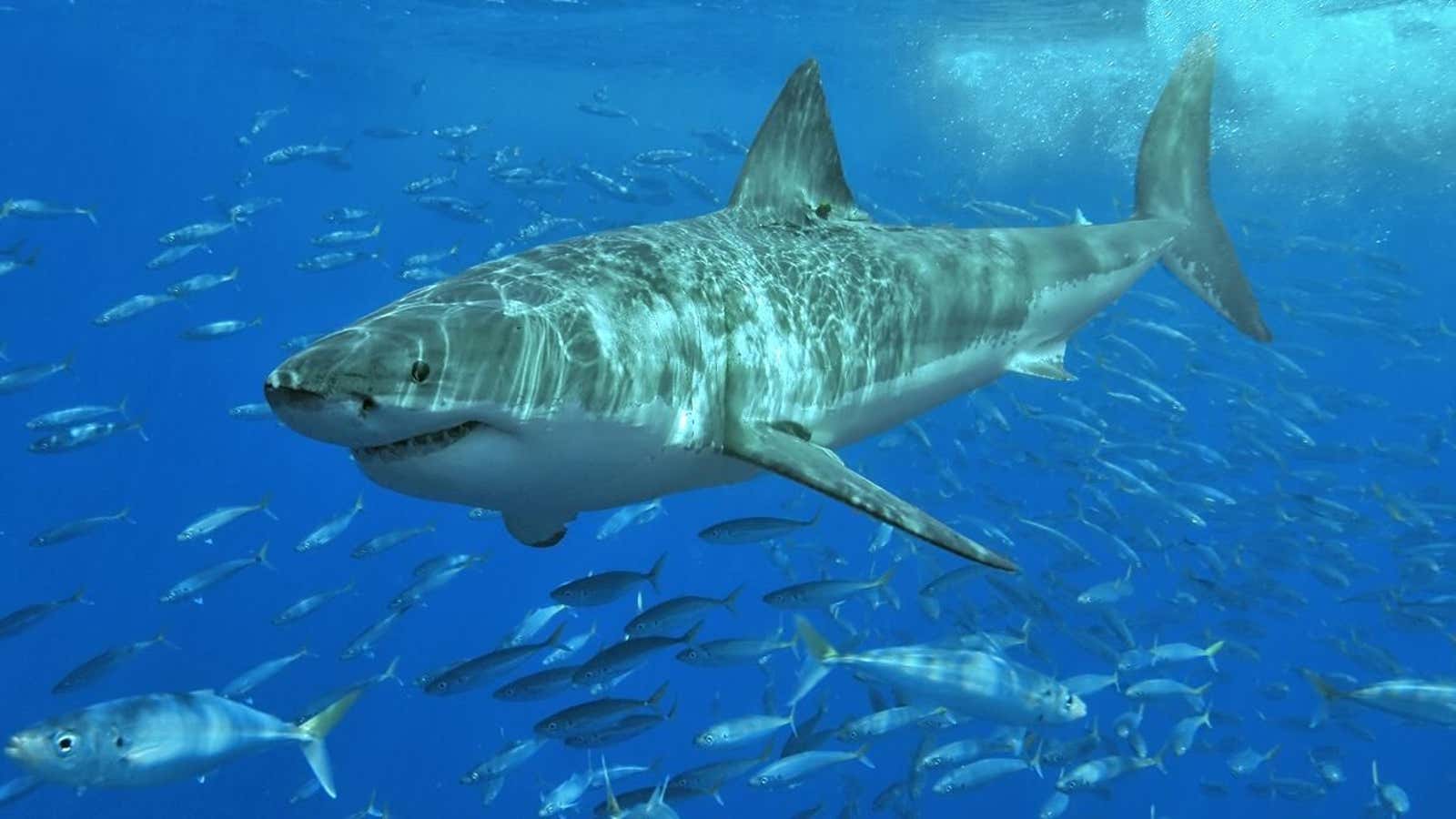There’s probably a perfectly good explanation for it, and there is absolutely no reason to be alarmed, but hundreds of great white sharks are congregating in a remote spot deep in the Pacific.
Which is fine! Yes, great white sharks are typically solitary creatures, so researchers were a bit surprised to realize just how many of them travel to the same spot halfway between Hawaii and Mexico’s Baja California. And yes, it’s true that the strange behavioral patterns the sharks exhibit once they get there—diving 1,000 feet toward the ocean floor and back up again, as often as every 10 minutes, for example—have never been previously recorded in any study of great white shark migration.
But do not worry. Hundreds of great white sharks have been mysteriously drawn to the same New Mexico-sized patch of the Pacific every spring for at least the last 10 years, like it’s some kind of shark Davos. Seriously, you do not need to be concerned.
It should not bother you at all that scientists have been watching this spot for more than a decade and they still don’t know what they’re doing down there. They know that from November to January, California’s great white shark population swims the coastal waters snacking on sea lions and elephant seals. That makes sense! But what defies logic is that the sharks then head for open water, and that hundreds of them go specifically to this shark meeting point where they remain through spring before returning to California. Scientists have even given the spot a nickname: the “White Shark Café.” That’s adorable!
An adult great white shark has 300 serrated teeth up to two inches long.
This spring, a team from the Monterey Bay Aquarium and Stanford University, led by Stanford marine biologist Barbara Block, followed a group of satellite-tagged sharks out to the White Shark Café to try to figure out what’s going on. Very little prior research has been done on this expanse of open water, so scientists collected data on both shark behavior and the oceanic ecosystem to try to understand why sharks work so hard to get there every year, and what might happen if the area was threatened.
“Why would you expend so much energy to get so far out there?” said Sal Jorgensen, an aquarium research scientist, in a video diary from the ship. “It must be important. And if it’s gone or unprotected or if it becomes a place where they’re vulnerable, it’s difficult to say what could happen, but it probably wouldn’t be good.” For the sharks, he means.
There is so much scientists don’t know about great white sharks, like how long they live (maybe as long as humans?) or how many of them there are (about 2,400 off the coast of California—and possibly many more!).
We do know that they can swim up to 25 miles per hour. We do know that they are nearly impossible to hold captive and will either refuse food, kill other sharks in the tank, or bash themselves against the glass of the aquarium until they die or are released. And we know that at this moment, hundreds of them are circling the depths of the Pacific Ocean, diving for some unknown goal that’s incredibly important to them. That’s fine. They’re fine. This is all probably going to turn out fine.
